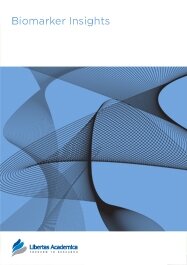

Publication Date: 12 Jun 2013
Type: Original Research
Journal: Biomarker Insights
Citation: Biomarker Insights 2013:8 69-75
doi: 10.4137/BMI.S11448

There is much support for the role of Gamma-Aminobutyric acid (GABA) in the etiology of autism. Recent research has shown that hepatocyte growth factor (HGF) modulates GABAergic inhibition and seizure susceptibility. This study was designed to determine and correlate plasma levels of HGF, GABA, as well as symptom severity, in autistic children and neurotypical controls. Plasma from 48 autistic children and 29 neurotypical controls was assessed for HGF and GABA concentration using ELISAs. Symptom severity was assessed in these autistic individuals and compared to HGF and GABA concentrations. We previously reported that autistic children had significantly decreased levels of HGF. In this study, the same autistic children had significantly increased plasma levels of GABA (P = 0.002) and decreased HGF levels correlated with these increased GABA levels (r = 0.3; P = 0.05). High GABA levels correlated with increasing hyperactivity (r = 0.6; P = 0.0007) and impulsivity severity (r = 0.5; P = 0.007), tip toeing severity (r = 0.35; P = 0.03), light sensitivity (r = 0.4; P = 0.02), and tactile sensitivity (r = 0.4; P = 0.01). HGF levels did not correlate significantly with any symptom severity. These results suggest an association between HGF and GABA levels and suggest that plasma GABA levels are related to symptom severity in autistic children.
PDF (789.76 KB PDF FORMAT)
RIS citation (ENDNOTE, REFERENCE MANAGER, PROCITE, REFWORKS)
BibTex citation (BIBDESK, LATEX)
XML
PMC HTML

I would like to extend my gratitude for creating the next generation of a scientific journal -- the science journal of tomorrow. The entire process bespoke of exceptional efficiency, celerity, professionalism, competency, and service.
Facebook Google+ Twitter
Pinterest Tumblr YouTube